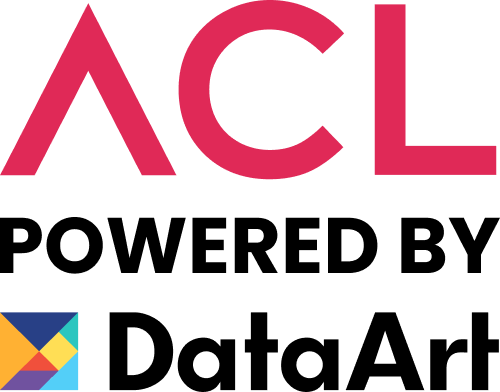About 63% of organizations report improvements in software deployment quality after implementing DevOps. Alongside Agile and Scrum, this software methodology has quickly become a go-to choice for many businesses looking to optimize their IT teams and produce better long-term results. Still, integrating DevOps into day-to-day operations can be challenging if your team is not familiar with this methodology and used to doing things a certain way. This article aims to help with that process by diving into how to implement DevOps for nearshore staff augmentation, starting from the basics of DevOps methodology to addressing the best way to approach this transition. Whether you're just starting out or looking to refine existing processes, this guide offers insights and actionable steps to ensure your team can thrive under a DevOps framework. Keep reading to learn more!
What Is DevOps?
DevOps, meaning "development" and "operations," is a collaborative approach that unites software development and IT operations teams. This methodology was created to shorten the development lifecycle and ensure continuous delivery with high software quality. It involves a set of practices and a culture that fosters collaboration between development and operations teams. This collaboration is aimed at making the entire software lifecycle faster, from development and testing to deployment and operations, ensuring that you can deliver quality software at a pace that meets the demands of your customers and the market
One of the core benefits of adopting DevOps is the significant reduction in the time to deploy new releases. Statistically, organizations employing a DevOps approach experience deployment frequencies up to 200 times more frequent than traditional software development practices. This capability stems from automation, continuous integration, and continuous delivery practices that streamline workflows, according to the Puppet State of DevOps Report.
However, it’d be wrong to believe DevOps is all about development speed, as it's also about improving the quality of software deployments. The same report highlighted that DevOps-oriented organizations see change failure rates reduced by three times compared to their peers. This improvement is largely due to rigorous automated testing and quality assurance practices that catch issues early, reducing the likelihood of defects reaching production. DevOps teams are also able to recover 24 times faster from failures and restore services much more rapidly than teams in non-DevOps environments. This fast-paced recovery is crucial in maintaining high availability and customer satisfaction, particularly in industries where downtime directly correlates with lost revenue.
Key Principles of The DevOps Methodology
Continuous Integration and Continuous Deployment (CI/CD):
Continuous Integration and Continuous Deployment are a fundamental part of the overall DevOps philosophy. These principles highlight the need for the automation of integrating and testing code changes, aiming to facilitate quick, reliable deployments into production. The Puppet's State of DevOps report revealed that organizations employing CI/CD could deploy up to 30 times more frequently, with a 50% reduction in the total number of deployment failures. This shows this approach not only accelerates development cycles but also ensures that new features are easier to depend on and more rapidly available to end users.
Collaboration and Communication:
Effective communication and collaboration are key in smoothing out any issues between your operations and development teams. This principle emphasizes the need for teams to work closely together to enhance the quality and efficiency of the end product. According to Puppet's report, high-performing DevOps teams, meaning those that excel in these areas, spend 22% less time on unplanned rework. This newly gained efficiency allows them to allocate more time to new tasks, deploy software products faster, and keep end users happier.
Maximized Automation:
DevOps aims for highly efficient automation to streamline processes to minimize human error, enhance consistency, and expedite development workflows. A survey conducted by GitLab in 2021 highlights the significance of robust automation practices, noting that teams with strong automation are 1.3 times more likely to experience no deployment delays compared to those with weaker automation processes. By automating routine and repetitive tasks, teams can focus more on complex, value-adding activities.
Monitoring and Logging:
This key DevOps principle involves the continuous monitoring and logging of system performance to proactively detect and rectify issues, thereby ensuring system reliability and availability. Effective monitoring and logging can significantly impact operational stability; a study by Splunk indicates that proper implementation of these practices can reduce system downtime by up to 88%. This not only improves user satisfaction but also saves costs related to downtime and system failures.
A Culture of Continuous Improvement:
DevOps encourages a working environment that prioritizes ongoing learning, experimentation, and a readiness to embrace calculated risks. The DevOps Research and Assessment State of DevOps Report supports this, showing that teams dedicated to continuous improvement are twice as likely to achieve or exceed their organizational objectives. This culture fosters an environment where innovation flourishes, and constant feedback loops lead to ever-improving products and processes.
DevOps And Nearshore Staff Augmentation
When you consider integrating DevOps into your business, nearshore staff augmentation offers the perfect format to explore this methodology without breaking the bank. Typically closer in proximity and operating within similar time zones, nearshore teams are able to easily sync with your company's daily operations, while introducing new systems to the rest of your staff. This geographical and cultural alignment can be a game-changer for implementing continuous integration and delivery practices central to DevOps.
The advantages of using nearshore DevOps teams include faster turnaround times and more consistent communication. With nearshoring, you can hire IT professionals who bring a high level of expertise and a deeper understanding of your market while saving money compared to traditional hiring arrangements. This strategy helps you reduce operational costs by up to 40% compared to traditional in-house hiring. Recruiting the right professionals at the right time will help you maintain system reliability and achieve faster deployment cycles, especially if you start implementing the DevOps methodology.
Implementing DevOps with a nearshore team also means you can leverage their specialized skills to automate your pipelines and enhance your deployment strategies. This can lead to significant improvement in your product's time-to-market - something considering the current cut-throat competition in the online space. At the end of the day, nearshore staff augmentation not only supports the operational aspects of DevOps but also enriches your team's capabilities, making it a smart strategy for businesses looking to innovate and improve efficiency. by hiring DevOps developers in Latin America, you gain the agility to adapt quickly on a budget, ensuring your services are always ahead of the curve and aligned with user expectations.
Planning Your DevOps Strategy for Nearshore Augmentation
Identify Core Objectives and KPIs
You should start by clearly defining what you hope to achieve with nearshore DevOps support. Are you looking to increase deployment frequency, reduce time to market, or enhance collaboration between teams? Setting specific, measurable goals is key to success in any staff augmentation venture For example, according to the 2022 Accelerate State of DevOps Report, organizations that clarify their objectives can improve their deployment frequency by up to 208%.
Select the Right Nearshore Partner
Choosing a nearshore partner involves more than just scouting for the cheapest deal available. The priority should be finding a team that aligns with your company's culture and technical requirements, which is why nearshoring is usually the best alternative for North American companies compared to offshoring. Look for partners in time zones that allow for overlapping working hours, allowing for real-time communication and collaboration - a practice reported by Deloitte to increase project success rates by 30%.
Ensure Seamless Integration
Integration of nearshore teams should not disrupt your existing workflows. Utilize tools and platforms that support collaboration across borders, like GitHub for code sharing and Jenkins for CI/CD. In fact, according to a Cisco study, implementing unified communication tools can increase team productivity by up to 20%.
Focus on Continuous Training and Development
Investing in ongoing training for both your in-house and nearshore teams ensures everyone remains proficient in the latest DevOps practices and tools. According to a McKinsey study, companies that engage in continuous learning are 3.5 times more likely to outperform their competitors in terms of organizational performance. This is the best way to make sure your DevOps processes are future-proof and your nearshore team is able to create a long-lasting impact on your organization by leading this transformation through their expertise with the methodology.
How To Implement DevOps For Nearshore Staff Augmentation
Start with a Thorough Onboarding Process.
Ensure that your nearshore team is well-versed in your company's culture, goals, and, most importantly, the DevOps practices you follow. A detailed onboarding process can improve team cohesion and efficiency by up to 70% according to a 2022 industry report by Onboarding Insights. This includes training on tools, processes, and expectations that are crucial for maintaining a unified DevOps workflow across distributed teams.
Establish Clear Communication Channels.
Effective communication is vital for the success of DevOps teams, particularly when dealing with teams in different locations. According to a recent Tech Communication Survey, companies that employed specialized tools for communication and project management saw a 50% increase in operational efficiency. Following this advice, your nearshore team should be in direct communication with your in-house staff through tools like Slack, Zoom, or Microsoft Teams to maintain constant rapport.
Automate Wherever Possible.
Automation is a huge part of DevOps, and your organization shouldn’t miss out on it. Any nearshore DevOps developers you hire should integrate tools that facilitate continuous integration and continuous delivery (CI/CD), such as Jenkins, GitLab, or CircleCI. This will help you save money on development costs and optimize processes across the board. The recent Automation Impact Report shows that automation can lead to an 80% reduction in deployment failures, not only speeding up the development process but also minimizing the chances of human error.
Closely Monitor Key DevOps Metrics
Continuous monitoring and proactive management of DevOps metrics are two essential tasks that should never be slacked on if you want your nearshore team to remain high-performing. This is why it’s best to implement monitoring tools that provide real-time insights into application performance, system health, and user behavior. This data will help you make informed decisions and address any potential issues that might arise in the future. Metrics like deployment frequency, lead time, failure rate, and mean time to recovery (MTTR) should be tracked regularly - in fact, according to a Splunk survey, organizations monitoring these metrics have reported a 45% improvement in customer satisfaction.
Regularly Review and Optimize Your Strategy
DevOps is an evolving field, so your strategy shouldn’t fall behind. Instead, focus on reevaluating what your company needs on at least a yearly basis. Regularly assess the performance of your DevOps team and make adjustments as necessary. These consistent reviews can help identify inefficiencies and opportunities for improvement, potentially increasing overall operational efficiency by up to 40%.
Ready To Hire DevOps Developers Through Nearshore Outsourcing?
As we mentioned, DevOps is the perfect methodology for companies looking to maximize their operational efficiency while ensuring high-quality development results. If you want to improve your current processes and ensure long-term success, it might be time to implement this strategy into your organization. At ACL, we have years of experience building nearshore development teams proficient in a variety of tech stacks and methodologies, and, through our staff augmentation services, we can help you hire DevOps developers to start working right away. Our recruitment team handles the bulk of the work, ensuring your organization only has to worry about selecting the right final candidate to join your team. We’ll vet, recruit, and onboard your dream DevOps team in weeks, so contact us today to learn more about our services!

-1%20(1)%20(1).webp)




